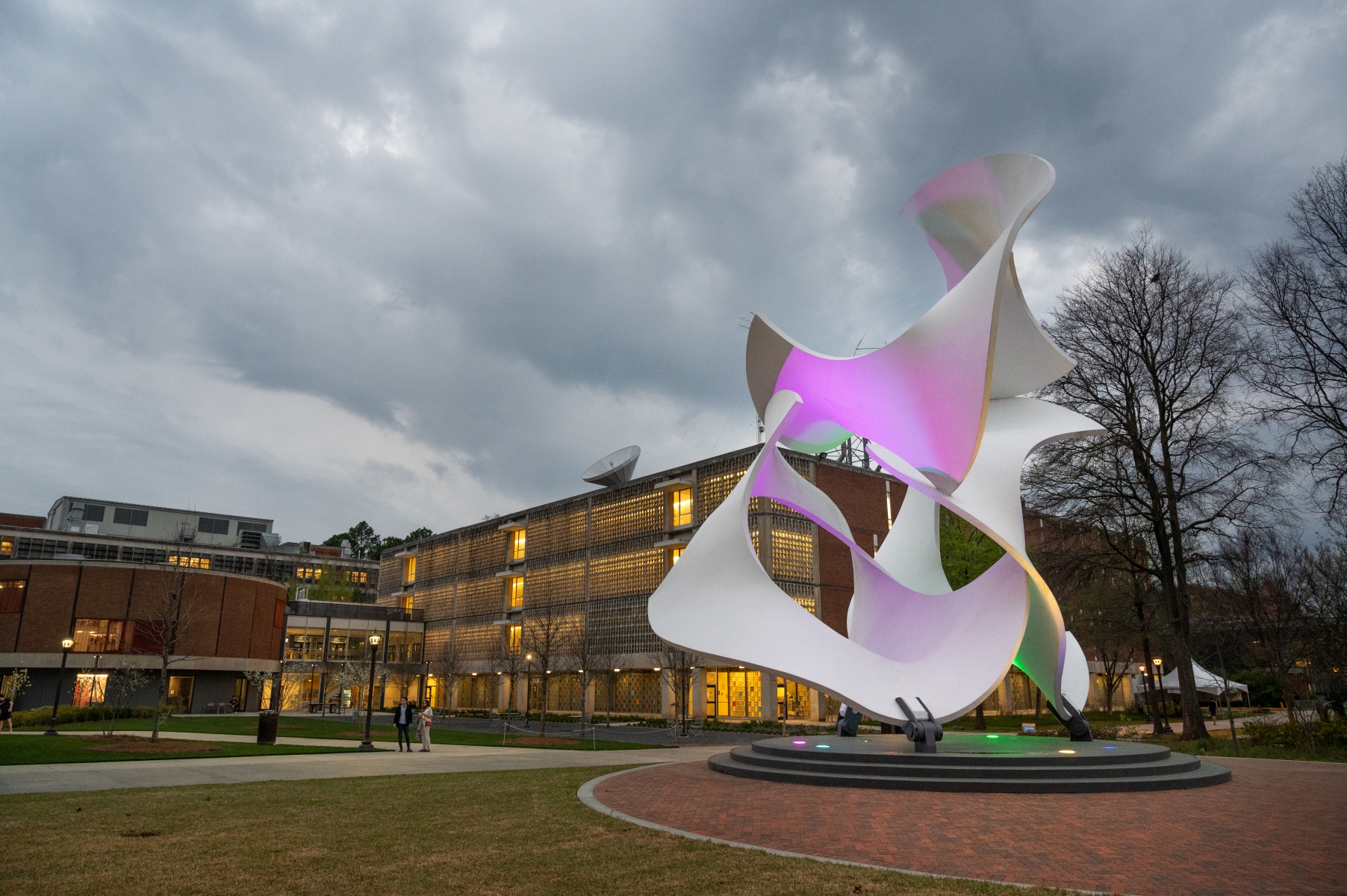Two monks were arguing about the temple flag waving in the wind.
One said, “The flag moves.”
The other said, “The wind moves.”
They argued back and forth but could not agree.
Their master then said: “It is not the flag that moves. It is not the wind that moves. It is your mind that moves.”

Used in Zen Buddhism, koans, like the one above, are paradoxes, riddles, or dialogues meant to shake up our logical, rational minds. They create intrigue and provoke doubt. They make us ponder and rethink as we seek new insights, learn, and grow.
This week, we gathered for a dedication of an exciting addition to Georgia Tech’s growing public sculpture collection, named Koan. Standing 12 meters tall, Koan is a magnificent structure in the center of campus, designed by the late John Portman, renowned architect and designer and one of our most distinguished alumni. I didn’t have the pleasure of knowing Mr. Portman in life. But I love the message Koan will send on his behalf to the generations of Yellow Jackets to come.
At Georgia Tech, we are formidable problem-solvers. Give us a problem, no matter how complex, and we’ll give you a differential equation or an elegant polynomial algorithm to solve it. Here’s the catch though, many of the problems that we face — the most difficult, profound and existential human puzzles — lie on a different plane. They involve complex moral and philosophical puzzles. They touch our humanity. They call for new approaches and challenge logical, rational thinking.
It is most appropriate that this new structure is named “Koan,” standing tall and unavoidable, ready to shake our logical, rational minds. Koan reminds us that engineering, mathematics, and science; logic and reason; do not occur in a space separate from creativity, art and design, or from emotion and beauty. That these domains intersect and interact in surprising and necessary ways.
One of the big ideas that came out of our strategic plan is the notion that our ability to solve the most meaningful problems of our time, to inspire others and improve people’s lives requires that we strengthen the arts at Georgia Tech, that we intentionally explore the intersections where the art of design meets the logic of engineering. Koan’s graceful rings embody that fusion of disciplines: knowledge, research, and creativity.
Interestingly the execution of Koan required quite a bit of engineering, including a thorough testing of its carbon fiber panels' resistance to strong winds, which was conducted in a virtual wind tunnel run by Aerospace Engineering Professor Julián Rimoli. As it turns out, we need art to advance technology and technology to advance art.
In the past few decades, we have found new ways to bring the arts into campus life through academic programs like music technology or digital media and public art programs like Arts@Tech. We need to continue to grow our work in the arts, acknowledge the crucial value of the arts in our mission and unapologetically bring the arts in, mix it up with our science and technology, and watch the magic happen.
We are grateful to John Portman for his vision and proud to have Koan as a lasting addition to our campus landscape. Koan was made possible through the generous support of The Portman family, former Atlanta Mayor Kasim Reed, Atlanta Mayor Keisha Lance-Bottoms, and many generous donors.
In closing, I offer another classic koan, one that I hope you remember every time you see the sculpture illuminated (or off):
Te-shan was sitting outside engaged in his meditation practice.
Lung-t’an asked him why he didn’t go back home. Te-shan answered, “Because it’s dark.”
Lung-t’an then lit a candle and handed it to him.
As Te-shan was about to take it, Lung-t’an blew it out.
Te-shan had a sudden realisation, and bowed.
